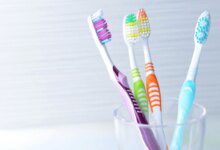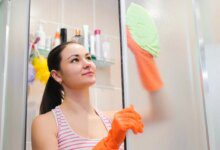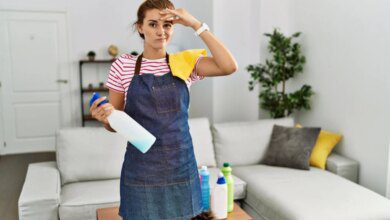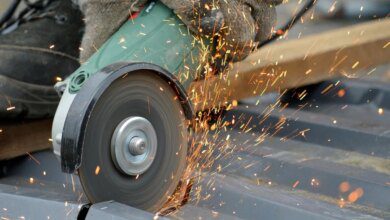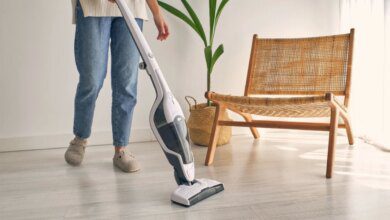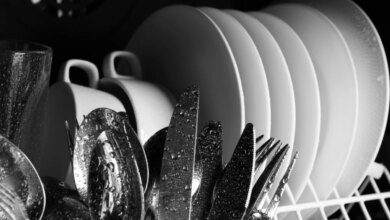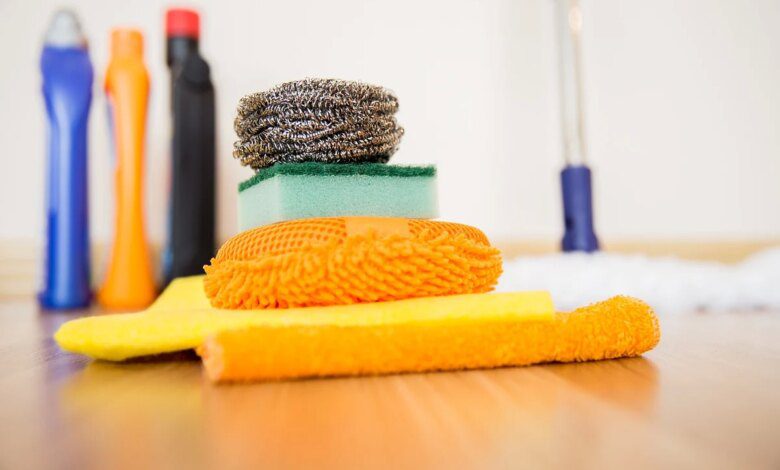
Cleaning mistakes that could endanger your health
Cleaning the bathroom and kitchen is the biggest problem. If you want to be effective and achieve consistent cleanliness, you need the best products and avoid these mistakes!
Bleach is one of the main cleaning products that many people use. It is known to remove even the toughest stains and has also been recommended as a disinfectant during the COVID-19 pandemic. However, you should think twice before combining it with other products or using it everywhere. For example, cleaning with bleach is not recommended on all bathroom surfaces. Read on to learn about some common kitchen and bathroom cleaning mistakes that experts say can put your health at risk!
The content of the article
Change your dish sponge less often
A sponge is an ideal environment for bacteria to grow, especially with prolonged use. British cleaning expert Armeka Townsend shares the same opinion, reports Bestlifeonline.com. “Using a dirty sponge to clean dishes or surfaces can spread bacteria, leading to food poisoning and other health problems,” warns Townsend. He recommends replacing your kitchen sponge every few weeks and sanitizing it between uses by microwaving it for a minute.
Remember that bleach can cause allergic reactions.
Some people believe that the smell of bleach indicates effective cleaning. In fact, cleaning professionals do not recommend using bleach in home cleaning.
“Many products that contain bleach contain chlorine compounds. These fumes can negatively affect indoor air quality and cause adverse reactions. Bleach cannot effectively treat mold on porous and semi-porous surfaces, allowing it to persist,” mold and air quality expert Michael Rubino told Best Life.
Combine cleaning products
If you use multiple sprays, wipes and disinfectants, be careful. Mixing different cleaning products at the same time can create toxic gases that can be harmful if inhaled. For example, mixing bleach with ammonia creates chloramine gas, which can cause breathing problems and be fatal.
You may also be interested in: Never mix vinegar with chlorine! This is the most dangerous combination
Mixing bleach with vinegar or acid-based detergent, which releases chlorine gas, is also dangerous. This may cause irritation to the eyes, skin and respiratory tract.
swell
Read the instructions on the products you use to clean your home, avoid mixing them, and open windows.
Remove dishes while they are still wet
Make sure the dishes you put back in the cupboard are dry. Damp dishes can create an environment conducive to microbial growth. Let them dry completely before putting them back.
You use bleach in the bathroom
Bleach is known to enhance whiteness and kill mold, but that doesn't mean it's necessarily a good bathroom cleaner. It is also a strong oxidizing agent that can discolor, damage and weaken many types of materials by destroying their chemical structure. Do not use it to clean showers, tiles or tiles. Due to its corrosive nature, bleach is not suitable for cleaning metal surfaces. This also affects the protective coating of the tiles, which can lead to stains and problems caused by moisture.
Many people clean their bathrooms with bleach because they think it will get the job done faster and better than any other product. However, it cannot remove dirt or grease.
Remember!
There are other cleaning products that can be effective in cleaning your bathroom and kitchen without the risk of using bleach. Vinegar, baking soda, or hydrogen peroxide (hydrogen peroxide) can be very good alternatives.

